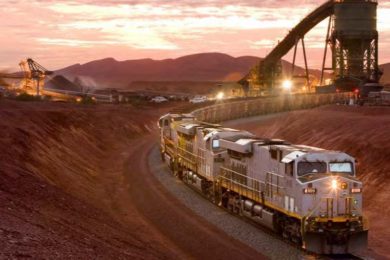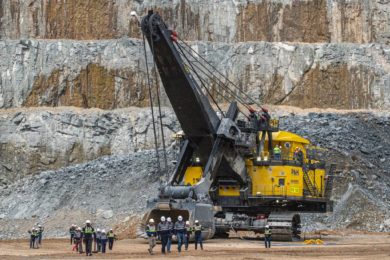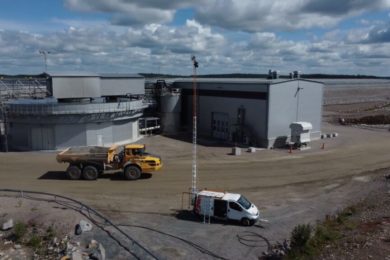Rio Tinto has released its financial results for the first half of the year and the company looks to be balancing profitability, growth investment and shareholder returns.
With EBITDA of $9.2 billion, up 2% year-on-year, operating cash flow of $5.2 billion and the same amount of net debt, the company has flexibility when it comes to where to put its money.
A number of sizeable divestments completed in the first half of the year – tied to coal and aluminium – have allowed the company to pay a $7.2 billion record interim dividend, but it has also greenlit $1.4 billion for what it calls “high-return growth” projects.
Projects under this banner include the Oyu Tolgoi copper-gold underground development in Mongolia, the Amrun bauxite project in Queensland and AutoHaul™, the company’s automated train haulage system in the Pilbara of Western Australia.
In addition to this, the company has agreed to provide $146 million to undertake initial work at its Koodaideri iron ore project in Western Australia, ahead of a final investment decision by the end of the year.
These funds will go towards detailed engineering work on key elements of Koodaideri, development of a rail construction camp and the first stage of an accommodation camp. Rio calls Koodaideri its first “intelligent mine” which, should it receive board and government approvals, will incorporate the “latest in high-tech advances in the industry” using increased levels of automation and robotics.
The prefeasibility study on Koodaideri included a 40 million tonne per year capacity dry crushing and screening plant, non-process infrastructure, product stockyards, rail loop and load-out and a 170 km AutoHaul rail link to the main line. This came with a capital cost of some $2.2 billion and potential for construction to commence in 2019, followed by first production in 2021. Phase two of Koodaideri could potentially take the operation to beyond 70 Mt/y.
In an update in June, the company said the Koodaideri feasibility study would use “data centric and advanced digital engineering to produce a digital twin of the asset”, while there was over 100 “innovation opportunities” within the FS.
The project is expected to deliver replacement tonnes to the company’s Pilbara operations as other mines come to an end of their lives.
In terms of AutoHaul, which the company has approved $940 million of spend on, Rio said around 65% of trains at the end of the June quarter had run in either driver attended or autonomous mode and more than 3.3 million kilometres had now been completed in this mode of operation.
The system, focused on automating trains transporting iron ore to Rio’s port facilities, received accreditation to run trains in autonomous mode from the National Rail Safety Regulator on May 18 and the first loaded autonomous journey took place on July 10. Full implementation of the autonomous programme is expected by the end of 2018.
At the $1.9 billion Amrun bauxite expansion project on the Cape York Peninsula, in north Queensland, development is advancing to plan with first shipment expected in the first half of next year. The stacker and reclaimer have been transported to site following completion of fabrication, while shiploader assembly is also nearing completion.
The Amrun expansion is expected to increase the company’s bauxite shipments by 10 Mt/y.
At the Oyu Tolgoi underground project, contractor numbers are approaching their peak, with a workforce of over 7,500 (89% Mongolian nationals) at the end of June.
Shaft two equipping and headframe fit-out as part of the $5.3 billion project is in progress, and the shaft five ventilation system has been fully commissioned and is now operational. Construction of the first drawbell at the block cave development is still expected in mid-2020.
When the underground is fully ramped up in 2027, Oyu Tolgoi is expected to produce more than 500,000 tonnes of copper a year.
Lastly, development of the A21 project at the Diavik diamond mine in Canada, which Rio owns 60% of, is ahead of schedule with first ore uncovered in March and the mine expected to be at full capacity during the December quarter of 2018.
A21 is expected to sustain the mine’s production levels at 6-7 million carats and extend the life beyond 2023.










